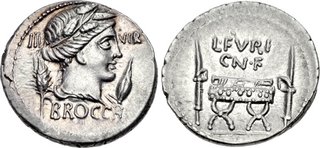Hellenistic influence spread east into Asia Minor and west in Magna Grecia, the Italian peninsula. This expansion led to a clash between Greece and Rome in southern Italy around 280BCE.
The decisive battle of actium in 31BCE ushered in the period of Pax Romana, and spelt the end of Greek independence from Rome.
Integration was swift and fruitful on both sides, and Roman influence on the Greek world eventually resulted in a rejection of asceticism in favour of a more gleeful conspicuous consumption. The people of Rome were famous bon viveurs - so much so that Rome was forced to make periodic legislation against more extravagant trends, such as superfluous culinary largesse and the fashion for sheer silk fabrics.
This decadence, a marked contrast to the austerity of ancient Greece, was reflected in the furnishing and decoration of Roman homes using fitted and non fitted furniture, which became increasingly sumptuous through luxury imports from Asia Minor.
Furniture was made in a greater variety of forms than ever before, and decorative elements grew more refined.

Roman Furniture
The basic Roman table was circular, and was usually set on tripod legs for extra stability - the feet were usually carved to reference animals feet, such as lions, just as they had been in Egypt, and later, in Greece.
The monopodium, a table supported by a single central pillar, was a later innovation, inspired by Eastern furniture, while a half-moon table known as the 'mensa lunata' was designed to be used alongside a crescent shaped sofa.
Hospitality was a salient feature of Roman life and, as a receptacle for food, the table was therefore an important possession.
Maple and African citrus, and in particular the roots, were especially prized timbers that were used for the best tables.

The Latin sella was a chair, of which there were many types. The sella curulis was a chair, now produced as reproduction furniture, of state and was another descendant of the Egyptian X-chair, although it was not collapsible and had a thick cushioned seat.
The sella curulis, or curule chair, was an extremely potent symbol of power, and depictions of these chairs can be seen on Roman coins.

Beds, handmade furniture, became grander than those used in ancient Greece, both in size of opulence and steps were needed to climb onto the highest bedsteads. Gold and silver feet, and veneers of precious woods and even tortoiseshell, displayed the wealth of the owner.
One furniture innovation that the Romans never quite developed to fruition was the glass mirror. The glass manufacturers of Siddon, a port city in present day lebanon, failed to become as popular as the polished silver mirrors that were in widespread use.
No comments:
Post a Comment